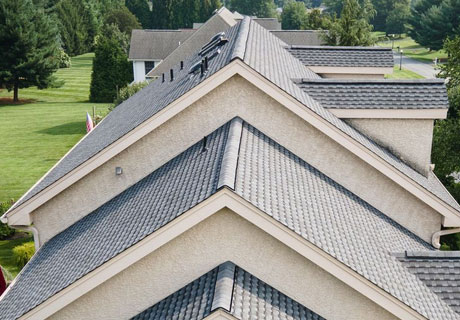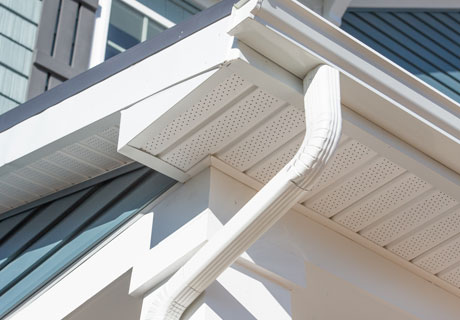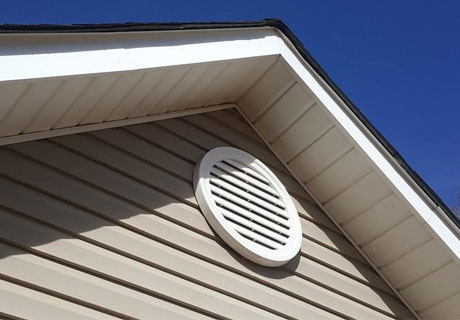Request A Free Estimate
Proper Roof Ventilation
Proper roof ventilation is one of the most important yet overlooked aspects of a healthy home. Without it, heat and moisture can build up in your attic, leading to problems like warped wood, mold growth, higher energy bills, and even premature roof failure. A well-designed ventilation system balances intake and exhaust, allowing air to circulate through your attic space and keep your roof protected year-round. Whether you’re building a new home, upgrading your current roof, or dealing with ventilation issues, understanding your options will help you make the right decision.
Why Roof Ventilation Is Essential
Your roof and attic space are constantly exposed to changing weather conditions, from hot summer sun to freezing winter temperatures. Without proper airflow, trapped heat and moisture can create long-term damage. Roof ventilation provides several key benefits:
- Extends roof lifespan by reducing heat buildup that can cause shingles to deteriorate.
- Prevents moisture damage by allowing condensation to escape before it causes mold or rot.
- Improves energy efficiency by reducing the strain on your HVAC system during hot weather.
- Increased comfort by helping maintain more consistent indoor temperatures.

Types of Roof Ventilation
The right ventilation solution will depend on your home’s design, attic size, and roofing materials. Some homes need specific types of ventilation, while others can use a combination of ventilation systems. We can even install an attic vent to help circulate the air within your home.

Ridge Vents
Ridge vents run along the peak of your roof and let rising hot air and moisture escape. They’re effective because they provide continuous ventilation across the ridge line, blend seamlessly with shingles, and require little to no maintenance. When paired with soffit vents, they create a balanced system that keeps attic airflow consistent year-round.

Soffit Vents
Soffit vents are installed beneath the eaves of your roof and serve as the intake system for fresh air. They work quietly and continuously, helping prevent ice dams in winter and reducing heat buildup in summer. Soffit vents are most effective when paired with ridge or other exhaust vents to create a cycle of airflow through the attic.
Gable Vents
Gable vents are placed high on the gable ends of your home, allowing hot air to escape while pulling in cooler air. They’re relatively simple to install and can enhance airflow, especially when combined with other ventilation systems. While they may add a decorative touch to your home’s exterior, gable vents alone often don’t provide enough ventilation for larger or complex roofs.

Turbine Vents
Turbine vents, or “whirlybirds,” use wind power to draw hot air and moisture out of the attic. They’re energy-efficient, cost-effective, and can move large amounts of air on windy days. However, their performance is limited when there’s little to no wind, making them less reliable in calm conditions.

Box Vents
Box vents, also called static vents, are small, square-shaped vents installed near the ridge of a roof. They’re affordable, easy to install, and require no moving parts, but multiple vents are often needed for larger roofs. Box vents are a low-maintenance solution but work best when paired with adequate intake ventilation, such as soffit vents.

Attic Fans
Attic fans are powered ventilation systems that actively pull hot, stale air out of the attic. Available in electric or solar-powered models, they provide consistent airflow regardless of wind conditions, helping reduce cooling costs in the summer. While highly effective, attic fans must be balanced with intake vents to prevent drawing conditioned air from inside the home.
Choosing the Right Roof Ventilation System
The best roof ventilation system depends on your home’s design, local climate, and budget. Many homeowners benefit from a combination of intake and exhaust options, such as soffit vents paired with ridge vents. Others may choose to enhance ventilation with attic fans or turbine vents. A professional roofing contractor can evaluate your current system, identify ventilation issues, and recommend the most effective solution.
When Should I Think About Improving Roof and Attic Ventilation?
You should improve your roof ventilation whenever your attic shows signs of heat or moisture buildup, such as high energy bills, curling or damaged shingles, condensation or mold, ice dams in winter, or an uncomfortably hot attic. It’s also a good idea to assess ventilation during roof replacement or home renovations. Proper airflow helps protect your roof, reduce energy costs, and prevent structural damage, and a professional like Becker’s can recommend solutions such as ridge vents, soffit vents, or attic fans to keep your home safe and efficient.
Contact the Roof Ventilation Experts at Beckers Today
At Becker’s, we understand how important roof ventilation is for protecting your home and ensuring energy efficiency. Our team can repair, replace, or install a complete roof ventilation system tailored to your property. Whether you’re interested in ridge vents, soffit vents, attic fans, or a combination of solutions, we’ll make sure your roof gets the airflow it needs to stay in top condition.
Don’t let poor ventilation shorten the lifespan of your roof or drive up your energy bills. Contact Becker’s today for a quote and let our experts design a system that keeps your home comfortable, efficient, and protected year-round.

GET YOUR FREE ESTIMATE TODAY!
Our Licensed and Insured Exterior and Interior Contractors Are Ready To Help.

